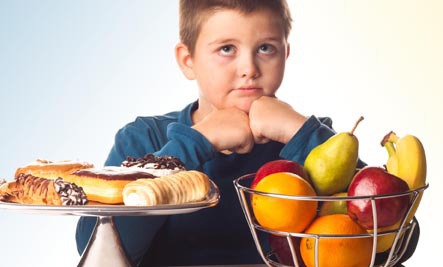Globally, about 42 million children under the age of five, according the World Health Organisation (WHO) are overweight or obese. That’s just 2 million short of DOUBLE Australia’s current population.
Obesity in children and adolescents is a major concern. Not only does it prevail short-term health and social problems, but it also increases their risk of long-term health burdens like type 2 diabetes and heart diseases that may arise during childhood and continue with them into adulthood.
It is a condition were excess body fat accumulates when the energy intake from food and drink is greater than the energy expended through physical activity over an extended period of time.
These rates are commonly measured using the body mass index (BMI) weight-to-height ratio, which has been around since the 1840s. While for adults the number on the scale and the BMI ratio is no longer the best indicator of health as it doesn’t measure body fat percentage, it is still the only way we can and are measuring our kids’.
For 10 year-olds overweight is defined as a BMI of 19.84 or more for boys and 19.86 for girls, with obesity defined as a BMI of 24.00 or more for boys and 24.11 or more for girls.
The epidemic has been on an upward trajectory since the 1970s, when poor eating habits and a sedentary lifestyle became common place due to the availability of fast food.
Changes to family structure and dynamics began to take place, such as women beginning to work more and work hours in general began to increase. As a result, parents were busier and began spending less time with their kids. Coming home late meant parents couldn’t prepare homemade meals, so fast food did the trick. Time-poor parents replaced expensive fruit, veggies and nutrient dense meals for quick snacks and pre-prepared meals.
From 1985 to 1995, the prevalence of overweight and obese children among 5–17 year-olds tripled to 20% in boys and 21.5% in girls, which mean’t in 1995 1 in 5 children were considered overweight or obese.
According to the stats, unfortunately signs are emerging suggesting obesity is developing at younger ages as the years go by.
Between 1995-2008, Childhood obesity rates climbed even higher, indicating that 1 in 4 children between the ages of 5-17 years-old are overweight or obese.
Luckily since this survey conducted by Australian National Children’s Nutrition and Physical Activity, these figures have plateaued and in 2015 remain stable. However, this figure is still alarming and changes need to be made.
So, what can we do?
We need to educate kids and parents about:
– Portion sizes
– Meal planning
– ‘Always’ vs ‘sometimes’ foods
– A balanced diet
– What is actually in junk and fast foods and what it does to our bodies?
– How do healthy foods benefit our bodies and brains?
– How to cook healthy food from scratch
– The importance of eating meals as a family
Our current food system is doing our kids a disservice. We need to be strong as individuals, as families, as communities and as a nation to demand the transparency we want to see in our food system.
Fresh fruit and veg need to be more accessible and sold for cheaper than processed foods, we need to tax sugar, junk food companies and fast food stores and ban any unhealthy food advertising towards kids.
Schools need to hop on board and create community gardens, implement fun compulsory cooking classes and sell only healthy foods over the canteen counter.
A lot of children get their habits from home, which is why this is the MOST important place to start making positive changes. We should be creating a supportive environment at home for our kids, free of ‘sometimes’ unhealthy foods and packed full of colourful, healthy and fresh produce. Slice, dice, mix and bake these nutrient dense foods and create beautiful home cooked meals that can be shared by the whole family around the dining table.
This is what will pull those figures down, this is what we need to be doing so our kids can be set up for life with the right skills and the right habits for a healthy future.
A QUESTION FOR YOU: Where do you see our obesity rates and food system in 2025? I want to hear from you. COMMENT your thoughts below.
x Leah

